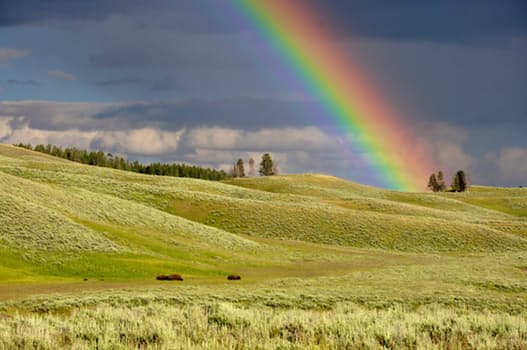
When our cook, Fausta Solfa, mentioned that dinner would be at 7:30 pm, someone in our group asked: “Is that 7:30 pm regular time or Italia time?” The rest of us started laughing. Four days into our week-long sojourn in southern Italy and we were finally getting used to the pace: be ready by 8:30 am meant we would be leaving at 10 am. Home by 7 pm suggested that fireflies would be emitting their soft lights for hours by the time we got back. In fact, most of us had stopped setting our alarms – but not because we were uninterested in what the days had in store. Here in Puglia, a region of vast plains and low-lying hills that occupies the less-travelled heel of Italy’s distinct boot shape, time was merely a word.
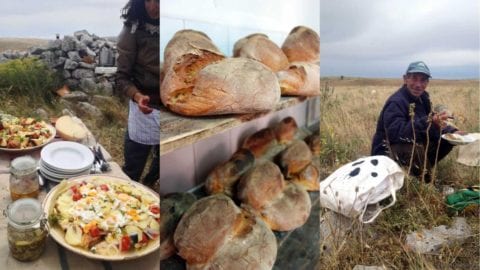
Puglia is not a place that typically attracts first-time visitors to Italy. Its arid soils are worlds away from Venice‘s famously romantic canals, and you will not see the splendor of Rome’s Trevi Fountain or the sheer grandeur of the Colosseum. But what Puglia does have – graciously warm residents, archaeologically-rich landscapes, stunningly beautiful towns and cities filled with claustros (closed spaces similar to cul-de-sacs) – it has in spades. I came to the region as a volunteer for Messors, a group that runs workshops in art restoration, Mediterranean cuisine and, oddly enough, shepherding.
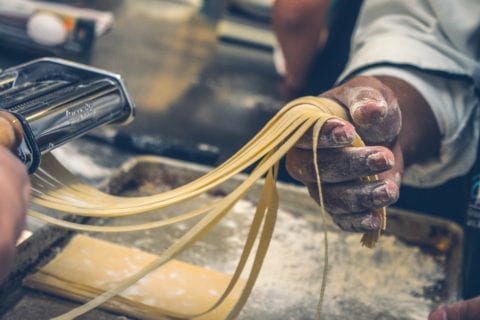
Local Tonio Creanza runs the Messors workshops and, simply put, the 44-year-old is incredible. Though he splits his year between Masseria La Selva – the sprawling 18th-century farmhouse and 500-acre property where the volunteer groups reside – and Vancouver, Canada, where Creanza lives with his wife and young son, it is obvious he feels at home here. Even when we were not working, Creanza was bustling about, making sure there was an ample amount of his family’s red wine on the tables and teaching us the properties of real olive oil, which his family also produces. In the evenings when the workshops were through, Creanza – guitar in hand – would serenade us with original songs. Some of the volunteers joined him with homemade instruments such as pie tins and spoons, creating impromptu jam sessions that lasted well into the early hours. It was midweek before I realized I had not checked my email in days.
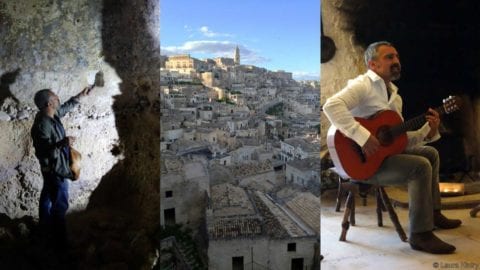
Left: Tonio Creanza points out an ancient fresco; centre: a view of Matera; right: Creanza serenades the group. (Photo: Laura Kiniry)
The artist within
Though the thought of restoring ancient frescoes was daunting, Creanza – who has a background in both archaeology and art restoration – first walked us through how to create frescoes of our own in a barn at Masseria La Selva, where we were surrounded by the works of past participants. To begin, he told us, mix water and lime plaster, churning the mixture by hand with a trowel. Once thoroughly blended, moisten the wall you will be painting with a spray, then begin applying layers of plaster on which to paint. The results were a mix of finely tuned and abstract artworks: a cartoon cat; a loaf of bread; a series of bright orange hues that the participant called the “River of Blood”. All of them good, though none rivalled the ceiling of the Vatican’s Sistine Chapel.
Later that afternoon, Creanza and his business partner Giovanni Ragone took us to explore a series of hidden caves. Inside each were faded, centuries-old frescoes the two men and past volunteers were working to restore. While chipped away in parts, they were exquisite; relics of past lives and cultures. In one of the caves, Creanza showed me how to delicately scrape away at large swathes of grime covering parts of a fresco. “Give it a go,” he said. It was frustrating at first, realizing the sheer scope of the project ahead, but the work became almost meditative. A half-hour went by and my progress – while comparatively small – was evident.
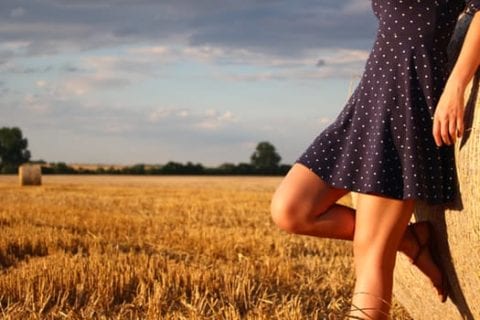
Taking to the fields
One thing I quickly learned about life at Masseria La Selva: everything is connected. In order to do have the concentration needed for fresco restoration we needed to be well fed, and being well fed meant eating meals that were well balanced and connected to the land. But to further appreciate where our food came from, we needed to experience our surroundings. One afternoon, Creanza led us into the fields outside ancient Altamura – the closest town to the farmhouse – to meet a modern-day, baseball cap-wearing shepherd who maintains a semi-nomadic and solitary life, roaming the land with his flock of goats and sheep 365 days a year. The highlight was a traditional shepherd’s lunch with cialledda, a dish served either hot or cold and made with cucumber, tomato, onions and famous water-soaked chunks of Altamura bread. Altamura is in fact so famous for its flavorful, long-lasting loaves that in 37BC the Roman poet Horace called it ”far the best bread to be had, so good that the wise traveller takes a supply of it for his onward journey”.
Bringing it all together
If there was ever an advocate for the international Slow Movement – a cultural shift toward slowing down life’s pace – it is Creanza, who believes that life is about doing right not just the first time, but all of the time, from enjoying meals that go on for hours to crawling through caves at a moment’s notice. Early in the week, Creanza drove us to the stunning city of Matera, home to the Sassi de Matera, or cave dwellings, that are some of the oldest residences in Italy, dating back more than 9,000 years. The following days we were treated to similar experiences: a walking tour of Bari, Puglia’s main port city; pasta making at Masseria La Selva with Creanza’s 77-year-old mother; dinner inside an ancient, fresco-covered crypt, at which local townspeople regaled us with their traditional songs. Soon we were dancing and singing along, completely immersed in the delicious slowness of the moment.
This story originally appeared in BBC Travel.

Laura Kiniry is a San Francisco-based freelance journalist who’s been covering travel, food and culture around the globe for more than a decade. Her writing has appeared both online and in dozens of regional, national and international publications including Oprah, NG Traveler, Smithsonianmag.com, Popular Mechanics, BBCTravel.com, CNNTravel.com and various airline and AAA magazines. Follow her adventures on Instagram at @laurajkin.